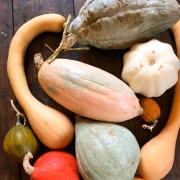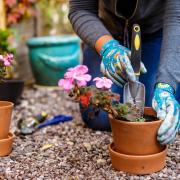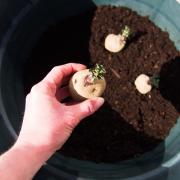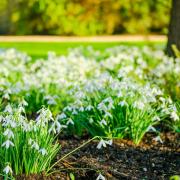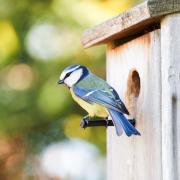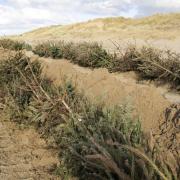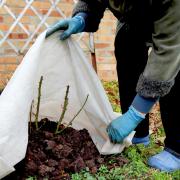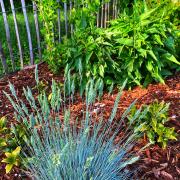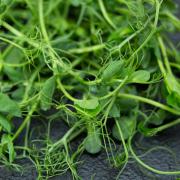RHS Tatton Silver-Gilt medalist garden designer, Sharon Hockenhull from Bolton explains how to make your garden fruitful
Living a sustainable life is no easy feat. Many of us would love to embrace Tom and Barbara’s Good Life principles but our busy lifestyles make it seem impossible.
Sustainability however is not just a fad, it has been around for a while and is here to stay. Our lifestyles will have to re-evolve, not necessarily by converting our back gardens into mini productive farms like Tom and Barbara, but by finding simple ways of transforming our outdoor spaces into more imaginative and resourceful places.
Our gardens possess huge sustainable potential, yet many simply have no time for them and prefer to create ‘low-maintenance’ gardens with expanses of grass, gravel and paving.
At the other end of the spectrum is the full-on grow-your-own enthusiast who spends all their free time at the allotment: digging, hoeing and patiently tending their seedlings. I wish I was one of these but running a business, bringing up a young family and keeping on top of the household chores depletes the ‘free-time’ element of my lifestyle to practically zero.
Instead I had to take a realistic approach to growing-my-own and decided to concentrate on fruit. Fruit is so easy to grow, easier than tending delicate vegetables, easier than maintaining a lawn. Fruit is tough and comes in a range of very tolerant forms like perennials, canes, shrubs, climbers and trees.
Fruit is also beautiful, can be very structural and is beneficial to insects. Growing fruit puts us back in tune with our seasons, is packed full of super healthy vitamins and usually goes down well with the children. Fruit is also very expensive to buy in the supermarkets - and the varieties grown for mass consumption are often tasteless - and more often than not flown in from Europe or America.
Incorporating fruit into your existing garden is also easy. Simply add a few strawberry plants into a perennial border, replace an overgrown shrub with an obelisk and grow some raspberry canes around it. If, like me, you have a Cordyline that has succumbed to the frosts (and there are many) replace with a robust fruit tree; I have chosen a damson but you could go for a plum, cherry or an apple or pear tree (or two). Or for that dreary shady corner that isn’t too dry add some bold leafy rhubarb.
Rules of thumb to bear in mind; fruit ripens with the sun so most fruit will require a south-facing aspect. Having said that I have a north-facing garden and I grow a range of fruit that does perfectly ok; just make sure you don’t plant in total shade like in the shadow of a fence or house wall. Ideally your soil should be well drained and humus-rich: which you can always boost with some good old well-rotted manure.
There is one other bonus to growing fruit. Once established most fruit will produce abundant yields, in some instances so much so that it can be overwhelming and far too much for one family to consume.
I met a client a few years ago who told me that her neighbour’s apple tree, which overhangs her garden, produced so much fruit that she didn’t know what to do with it all. Most was left to rot and discarded to the compost bin.
This meeting set in motion the idea for Fruitshare; an online database that allows people to register and share their unwanted fruit with other people in their local area; a great way to reduce fruit miles and boost community sustainability.
Growing fruit is a small act that requires minimal maintenance and yet sets in motion a whole list of benefits that will help us to live a more sustainable life. It will help us re-connect with how and where our food comes from, appreciate the seasons, educate our children, acquire new skills, refine our tastes for fresher and better food; we could even start to share our abundant harvests through Fruitshare.
The benefits are incredible and by embracing fruit we could all have a little piece of Tom and Barbara’s good life.
Antonio Carluccio’s urban fruit garden
A recent design project to create an urban fruit garden for the godfather of Italian cooking, Antonio Carluccio, shows that growing fruit can be sumptuous, contemporary and stylish.
When I met Antonio his passion for food, quality ingredients and cooking was obvious. He told stories from his childhood in Italy of foraging wild fruit, talked about his all-time favourites and described some of his fruit recipes he’d created for his friends.
He was passionate about having a garden full of delicious fruit alongside flowers, herbs, bees, butterflies; that would be easy to look after as well as being spacious for entertaining.
Antonio’s fruit garden, inspired by my 2009 RHS Tatton Park ‘Be fruitful’ show garden, is a contemporary design with clean lines, white rendered walls to reflect light and raised beds to allow for this ease of maintenance. His brief included a number of practical requirements: a workshop, plenty of space for entertaining, an area for a barbecue or hog roast as well as a ‘herbery’ and as much grass as possible.
In terms of fruit, 15 different varieties were carefully selected: two varieties of apple trees, a quince, a gage, two pears, strawberries, gooseberry, blackcurrant, grape, rhubarb, blueberry, peach, raspberry and tayberry.
Surrounding the fruit is abundant ornamental planting of perennials, bulbs and shrubs to attract those important pollinators and to give interest through the seasons.
The layout of the garden maximises the sunniest aspect for the main raised bed planting area, ideal for ripening the fruits.
Five top fruity tips
1. Blueberries are one of the best fruits to grow in pots. An amazing super fruit packed full of age-defying antioxidants, cholesterol-lowering properties and they can boost your brainpower, too. They will give you abundant yields for little effort. All they require is ericaceous compost as they thrive in slightly acid soil and water in dry spells.
2. For the little ones in your family get them to help create a raspberry wigwam. Start by getting some tall hazel or bamboo sticks, six should do, and push them into the ground making sure to leave an opening. Tie together at the top to make the wigwam. Thornless raspberries like 'Glen Prosen' or 'Canby' can be planted around the wigwam close to the poles. The kids can play in their den, watch the fruit grow and then get to feast on the berries.
3. If you dream of having your own fruit tree but are struggling to find room, why not go for some trained fruit trees? Espalier, cordon and fan-shaped trees offer wonderful structure and don't take as much space in your garden as a standard fruit tree. Step-over and dwarf fruit trees are also space saving forms.
4. Fruit is generally tough, but to give them a health boost sprinkle sulphate of potash feed (most garden centres will have this) around trees, bushes, strawberries and cane fruits; it will make them more resilient to disease and improve the quality your fruits.
5. The gift of fruit! As my mission is to get more people involved in growing fruit in their own gardens I often buy fruit specimens as gifts for my family and friends. So far I have attempted wrapping a fan-trained cherry tree, strawberries in a pot, blueberries and a grapevine…and so far I haven't had any complaints.



